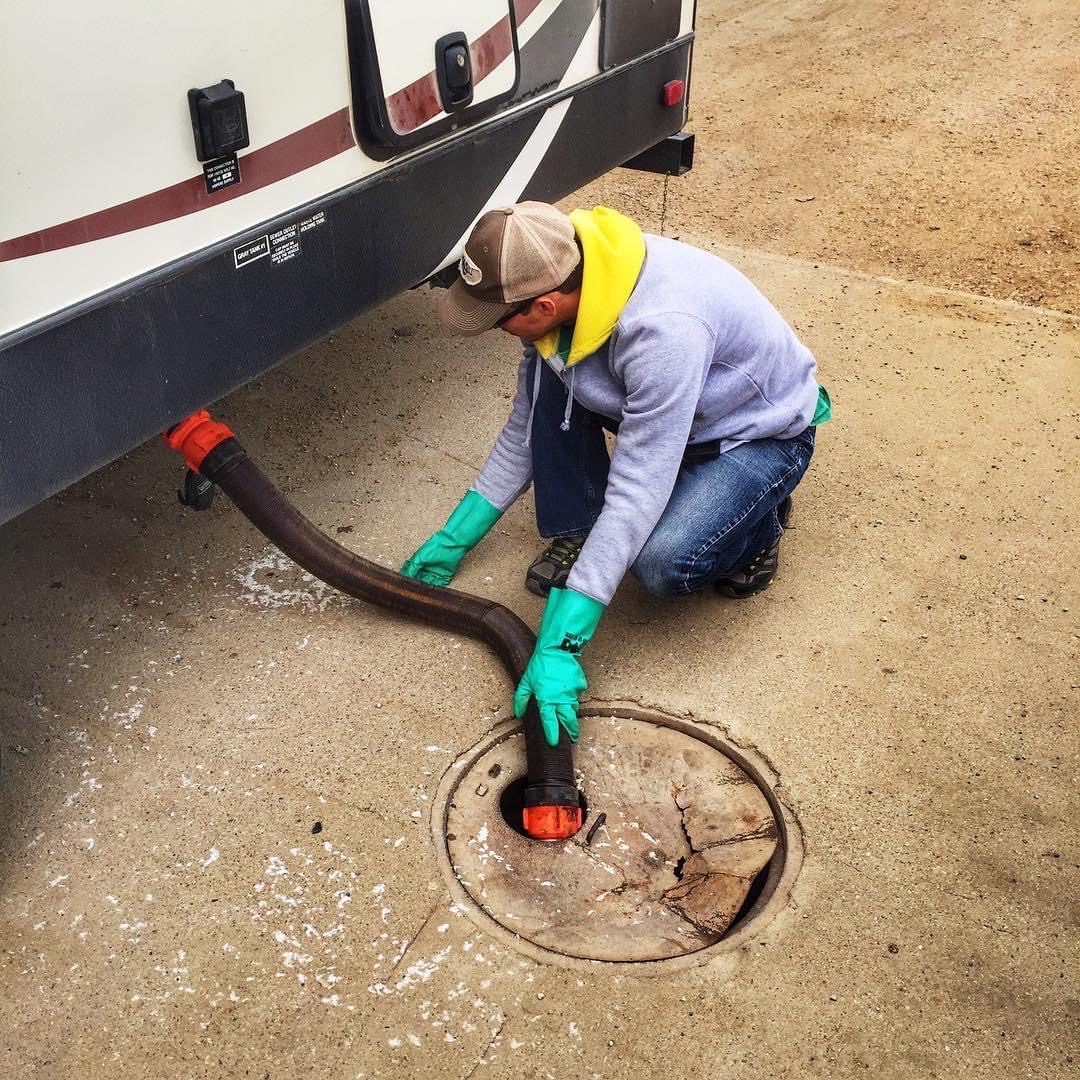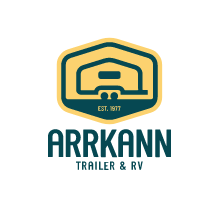Have You Hugged Your Holding Tank Lately?!
Published on May 29, 2020
Have You Hugged Your Holding Tanks Lately?
Of course you haven't really hugged your holding tanks lately (or at any other time) but, hopefully, you've given them some kind of TLC. If you haven't you might be in big trouble because neglect or mismanagement can lead to serious problems down the road.
Unfortunately, many RVers don't give their holding tanks a second thought, (though they should). While some find that they're a complete mystery, others are unnecessarily obsessed by what may lurk in the murky and inaccessible recesses of their holding tanks. Holding tanks are part of the water system in our RVs. The fresh water tank holds potable, clean water for consumption while not hooked up to city water. Grey water tanks handle drains from sinks and showers while the toilet flushes into the black water tank. The latter two are called holding tanks because that's their purpose - to hold the waste and sewage till both can be safely dumped. Their capacity is generally from 30 - 45 gallons each. The gray water drain is usually a 1-1/2 inch black ABS pipe with a slide valve to open and close it and the black water drain is a 3-inch ABS with its own slide valve. Both of these pipes drain at the 3-inch sewer connection on the lower driver's side of the RV. Some are located at the rear.
When connected up to the sewer in an RV park, you should keep the valves closed until you need to drain. This allows build-up of water in both tanks to help in drainage. Always drain the black water first followed by the gray water. Putting the gray water through last helps clean your sewer hose. Many newer RVs are equipped with enclosed, insulated and heated holding tanks which allows for three-season use with-out the worry of freeze up. An enclosed plumbing system underneath the RV also prevents accidental damage from road debris.
While on the subject of freeze up, I've heard of some snowbirds heading south in the cold of December or January using windshield washer fluid to flush the toilet. This is a definite No-No! Not only is it toxic and damaging to the seals, etc. in the toilet, but also environmentally irresponsible. When we travel in winter, we don't de-winterize but use road-side facilities until the threat of freezing is diminished. Flying J Travel Plazas are great; you can even use the trucker's lounges and showers. If you must avail yourself of your onboard facilities, try the pink RV or plumbing antifreeze. Its non-toxic and cost only a little more than the windshield stuff.
Most RVs have a monitoring panel for checking the charge in your RV batteries and the levels in the fresh, gray and black water tanks. Let me say right now that these gauges provide at best only approximations - even under optimum conditions when brand new. Nevertheless, as many of you have come to realize, it doesn't take much to throw the gauges completely off. This is particularly true of the level sensors in black water tanks. What happens here is that because there are lots of solids such as toilet paper, etc., in the black water and uninformed practices and poor tank management very quickly can result in the sensors being completely coated with unbroken down solids that render them useless. This is why, for example, the monitor will show the tank as still half-full just after you've dumped.
So, short of hugging your holding tanks, there are several more practical things you can do to ensure they work properly. An under standing of the RV toilet and when to drain the holding tank are two of the keys to avoiding this problem. RV toilets don't work like the commodes you're used to at home. There's no reservoir that releases a rush of gallons of water to flush when you push and release the handle.
In fact, with the RV toilet you must push the handle or pedal half way and hold, to let water into the bowl, then fully depress to open the valve and complete the flush. If you Just push and release to flush like at home, not enough water is let into the bowl to carry the paper and wastes cleanly away which may foul the toilet valve. This in turn, allows less water in the holding tank and results in solid matter quickly building up in the tank and on the sensors. RV toilets use a fraction of the water. This is by design to conserve water and holding tank space when not hooked up to city water and sewer connections. Always remember to employ the "two stage flush" in your RV.
More often than not we tend to drain the black water holding tank prematurely. I guess we have aversion to hauling "doo-doo" around in our shiny new RVs. unfortunately, constantly dumping with the tank only one-quarter or one-half-full only increases the solid build-up problem. A tank that is only half-full has half the mass of water and solids behind it than one that is full. When you pull the valve to drain it, the evacuating pressure is only half as much and some solid matter will be left behind in the tank. The less in the tank to be dumped, the more difficult it is to completely drain it.
Time is another factor that affects material build-up in holding tanks. The shorter the time between dumps the more chance of a solid build-up problem. They are called "holding" tanks for a reason. The longer you can hold the material in the tank, (a few days to a week is optimal), the more opportunity for solids to be broken down, and the more waste water volume you'll have available to help clear the tank.
But using adequate water and letting the tank fill up as much possible is only half the story in combating solid build-up. The most important element of a successful assault and eventual victory is the regular use of a holding tank additive. I don't have to tell you that the longer you hold your black water, the more problem you have with odor. You do need something to suppress or eliminate the smell. There are many different products on the market with some working better than others. Some also claim to clean your holding tank sensors.
The standard product in the past was formaldehyde-based but today's environmental concerns have all but eliminated it from the market. There are enzyme-type additives and those that add fragrance to cover the odors. Sometimes I don't know which is worse, the fragrance or the odor itself! Some are in powder form and others liquid. There are valve lubricants, tank fresheners, etc. Over the years, we've tried almost all of them with varying degrees of success.
Two years ago we tried a Canadian-made product called "RV-Boss". Well folks, we've used nothing else since. Let me warn you that based on our experience with it, I'm now completely biased in favor of this product. It is one of the few products I've come across that actually delivers on what it claims. First of all, it comes in a handy, easy to use self- measuring bottle so there's no spillage. It's non-staining and fragrance-free yet completely controls odors at a very small dosage. Its breakdown of solids is second to none and we haven't had a sensor problem since we began using RV-Boss. It's economical (one l6-ez~ bottle can last all season) and environmentally friendly (no formaldehyde). We like it so much that we recommend it on all our Caravans and Rallies and provide a bottle for each unit taking one of our caravans. This one product has replaced the four or five different additives we used to carry. We use it to control odors in the gray water tanks as well. It's important to note however, that RV-Boss is not designed for use in your fresh water tank.
There's nothing worse than a bunged-up holding tank. Although it's rather difficult to hug them, a little care in managing your RV tanks and attention to how we use them can pay dividends in trouble free operation.
Written by Dan Romanko, this article originally appeared in the RV Forum column in the June 2002 issue of the RV gazette
